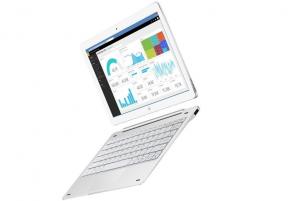Enterprise procurement. Working with suppliers - free course from the Russian School of Management, training, date: December 7, 2023.
Miscellaneous / / December 09, 2023
How to find reliable suppliers, achieve the best price and manage purchases effectively? Teachers from the Russian School of Management will answer these questions and tell you how to increase an enterprise’s income through a productively built procurement system. Training participants will learn to evaluate suppliers, negotiate, calculate inventory and plan purchases. The course includes algorithms for calculating all indicators that are needed for successful work.
Ph.D., business consultant in the field of strategic management, expert in production and logistics. Author of educational programs. Has a number of scientific works.
Logistics director of an international industrial company, business consultant, practical teacher.
Negotiations with suppliers
• What are procurement negotiations? Let's try to formulate it.
• Negotiation styles: coercion, persuasion, perception and emotion. What works more effectively in modern relationships.
• The most important factors and components of any negotiations.
• Negotiation outcome in which the supplier will serve you well.
• Preparation for negotiations is 80% of the success of the negotiations themselves. Algorithm for preparing for procurement negotiations.
• Strengths and weaknesses of the supplier and purchasing company. What to do about it?
• Strategies with which you can always win - only in books. It all depends on the situation!
• Harvard approach or “street fight”. What is better and how to proceed?
• Specifics of telephone conversations. Advantages and difficulties of conducting telephone negotiations. How to make a telephone conversation most effective.
• Team negotiations. Planning, typical mistakes, distribution of roles.
• How to successfully negotiate with a supplier team alone.
• 10 unspoken principles of buyer behavior when negotiating with a supplier.
• 3 golden rules of negotiations with the supplier, which the supplier himself applies.
• Psychotypes of difficult supplier negotiators. Characteristics. Methods of detection.
• Establishing contact. Create and leverage benefits from the start.
• Communication techniques and tactics.
• Techniques and methods of ongoing negotiations with the supplier.
• Balance of power in negotiations: answering the question “Who needs whom more?”
• The main tactics of the seller’s behavior: what are any sales “targeted” for?
• Types, methods and mechanisms of manipulation.
• Anti-manipulation: just a few steps.
• How to determine when it's time to end negotiations.
• Receiving obligations from the supplier, recording the agreements reached.
Inventory management in the enterprise logistics system
• What is inventory management and what is inventory?
• Without what is inventory management in an enterprise impossible?
• Cost structure for inventory management. Accounting for the cost of maintaining inventory as the basis for calculating the total costs associated with procurement. Calculation and management of inventory maintenance costs: methods and examples.
• Determining the required volume of working capital to ensure stable purchasing activities. Methodology for planning the need for working capital for purchasing activities, sources of covering the need for working capital.
• Basic KPIs for inventory management of a trading and manufacturing-trading enterprise: turnover inventory, inventory profitability, inventory level to meet current demand, level service. Interrelation and management of indicators.
• The purpose of creating a stock, types of stocks, approaches to stock management.
• Unliquid assets included in inventory. What is considered illiquid? What to do with illiquid assets?
• ABC and XYZ analysis of reserves. Classification of inventories and formation of an approach to inventory management based on the results of ABC and XYZ analysis. The ABC-XYZ matrix is like a “mirror” of an enterprise’s reserves. An example of analysis using EXCEL.
• Inventory parameters necessary for effective inventory management: demand, order size, costs inventory management, maximum desired stock level, order lead time, insurance level stock. What does a logistician and buyer need to know to manage inventory?
• Relationship between costs and order size. The concept of optimal order size.
• Demand forecasting as the basis for inventory planning. A roadmap for successful demand forecasting. Demand forecasting methods. Measuring forecast accuracy. Selecting the most suitable method for forecasting.
• Safety stock: all types of calculation.
• Order lead time. Concept and structure of the purchasing cycle.
• Order point, as the main element of inventory management and maintaining an optimal level of inventory to meet the demand of the enterprise's consumers.
• Inventory management models and systems.
Procurement and supplier relationship management
• Daily issues when working with suppliers and purchasing management.
• Global types of procurement.
• The main approaches of the supplier in relations with the purchasing enterprise.
• What you need to do to have good suppliers.
• Procurement methods. Methodological competence in organizing each procurement method (request for price, request for proposal, purchase from a single supplier).
• System of criteria for selecting and evaluating suppliers. The main criteria used by enterprises in Russia and Western countries.
• Models and methods for evaluating and selecting suppliers for commercial enterprises: comments and recommendations for use.
• Contract with the supplier. Main types of contract. What needs to be included in the contract for better performance by the parties.
• Supplier performance appraisal system for continuous analysis of supplier performance. Traditional approach and OTIF methodology. Automation of the assessment system: example and description.
• Pricing strategies in procurement. Ways to protect against an increase in the purchase currency exchange rate.
• Information technologies in procurement. Electronic document management system: scheme and rules. The most common purchasing technologies in Russia and Western countries.
• Composition of data and “mechanisms” for procurement automation. How to properly integrate existing procurement processes with software for information support of processes.
• Procurement planning tools: procurement plan, planning period, replanning point.
• Discounts on purchases. How to manage discounts, practical techniques.
• Terms of payment for purchases. Payment upon delivery, as a hidden deferred payment. Deferment of payment is not always profitable: how to relate deferment to price, volume, discount and profitability. Comparing suppliers' offers and manipulating conditions to obtain maximum benefits.
• Who should I pay and when? How to act in conditions of limited funds.



